Every day, children are left unattended in or around vehicles—a danger most people greatly underestimate. Too many children are seriously injured or killed each year from being left alone in or around a vehicle for “just a minute.” We all understand the inconvenience of loading, unloading, and reloading a child into a vehicle, and sometimes kids can slip away to the garage when we’re not paying attention. Our friends at KidsAndCars.org help us explain why children should never be left alone in or around a vehicle, even for “just a minute,” and shared some safety and prevention tips.
Safety Tips for Parents and Caregivers
- Never leave children alone in or around cars; not even for a minute.
- If you see a child alone in a vehicle, get involved. Call 911 immediately. If the child is in distress, get them out of the vehicle as quickly as possible.
- Use drive-thru services when available (restaurants, banks, pharmacies, dry cleaners, etc.) and pay for gas at the pump. Utilize curb-side pick up when available.
- Never leave a vehicle unattended with the engine running under any circumstances.
- Do not put children or adults inside a vehicle with the engine running while clearing snow or ice off the vehicle. Always clear the tailpipe first to prevent carbon monoxide poisoning.
- Keep car keys and remote openers out of reach of children and keep vehicles locked at all times, even in driveways and garages. Ask home visitors, child care providers, and neighbors to do the same.
- Always set your emergency brake when your vehicle is parked.
- In any state, a person can face child endangerment or neglect charges for leaving a child alone in a vehicle, even if the state does not have a law specifically making it illegal to leave a child alone in a vehicle.
NEVER leave a child alone inside a vehicle… not even for a minute!
A Message from Kids and Cars
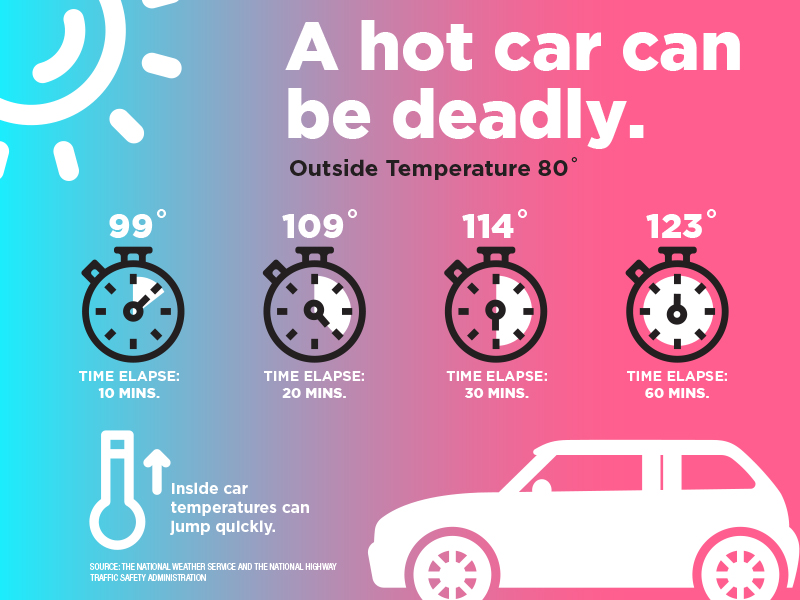
- Within minutes, a young child can begin to suffer the life-threatening symptoms of heatstroke.
The inside of a vehicle acts like a greenhouse, trapping in heat and causing the temperature inside to rise VERY quickly. Cracking the windows does NOT drastically reduce the temperature inside a vehicle. Read more about Hot Cars here.
- Vehicles are stolen with children alone inside every week.
This happens in even the safest neighborhoods—it only takes a few seconds for a thief to jump into your vehicle and take off with your child in tow. Most of the time, the thief does not see the child until after they’ve already stolen the vehicle.
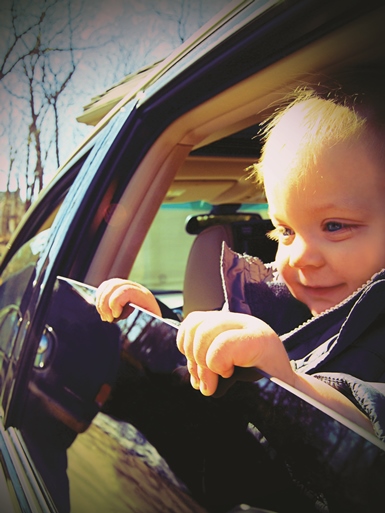
- Power windows in vehicles have killed or injured thousands of children.
It only takes 22 pounds of force to suffocate or injure an infant—power windows exert between 30—80 pounds of force. Children are curious; they push buttons without realizing the dangers of what could happen. In many cases, a parent was standing very close to the vehicle and had turned their back for just a few seconds.
As of October 2010, all new cars are required to have “pull to close” switches, which require you to pull up on them to close the window. Some vehicles have power windows that automatically reverse when an object (such as your child’s arm or neck) is in the path of the closing windows. Check your owner’s manual to see if your vehicle is equipped with this safety technology.
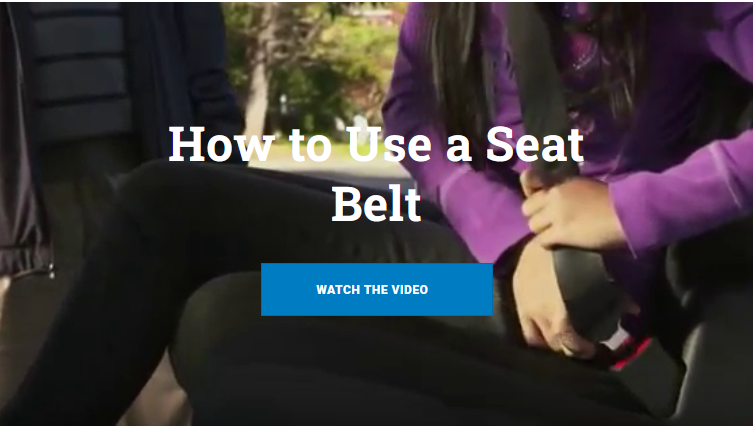
- Children have been strangled by seat belts in vehicles.
A child within reach of a seat belt may become entangled if he or she pulls the seat belt all the way out and wraps it around his or her head, neck, or waist. The majority of seat belts have a locking mechanism that is activated when the seat belt is pulled all the way out. If this feature activates while the child is wrapped in the seat belt, the child may not be able to free him or herself. Always ensure children are properly restrained and teach them that seat belts are not toys. If there are unused seat belts within a child’s reach, buckle them and remove excess slack.
- Every year hundreds of children are hospitalized or even killed after accidentally setting a car into motion.
Most drivers think that their vehicle cannot be shifted into gear unless the vehicle is running and the driver has their foot on the brake. However, this is NOT the case with older vehicles. They can be knocked into gear while turned off and without the driver’s foot on the brake. When the vehicle is set in motion, children may become scared and jump out of the vehicle only to be injured or run over.
As of September 2010, all new cars with automatic transmission with a Park position must have a Brake Transmission Safety Interlock, or BTSI, which can prevent a child or adult from unintentionally setting a vehicle in motion. Read your owner’s manual, and check out these tips from KidsAndCars.org to find out if your vehicle can be shifted into gear without your foot on the brake.
- If a child gets out of a vehicle they face a whole new set of dangers.
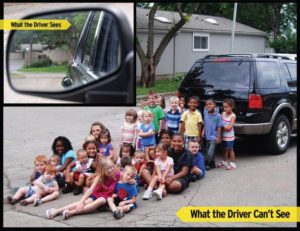
Backovers and frontovers can happen in any vehicle, because all vehicles have front, back, and side blindzones—these are the areas around the vehicle that you can’t see front the driver’s seat, even when using windows and mirrors correctly. The larger the vehicle, the larger the blindzone. In 70% of these incidents, a parent or close relative is the driver behind the wheel. These incidents, for the most part, take place in residential driveways and parking lots.
A few tips to avoid frontovers and backovers:
- Always walk around your vehicle and check the area for kids and pets before moving from a parked position.
- Roll down your windows while leaving your driveway or parking space so that you’ll be able to hear what is happening outside of your vehicle.
- Never allow children to walk through parking lots alone. Young children should always be carried or placed in a stroller or shopping cart. Even holding hands cannot prevent a child from darting away.
- Do not allow children to play in driveways, cul-de-sacs, or parking lots unsupervised.
- Because kids can move unpredictably, you should actively check your mirrors while backing up.
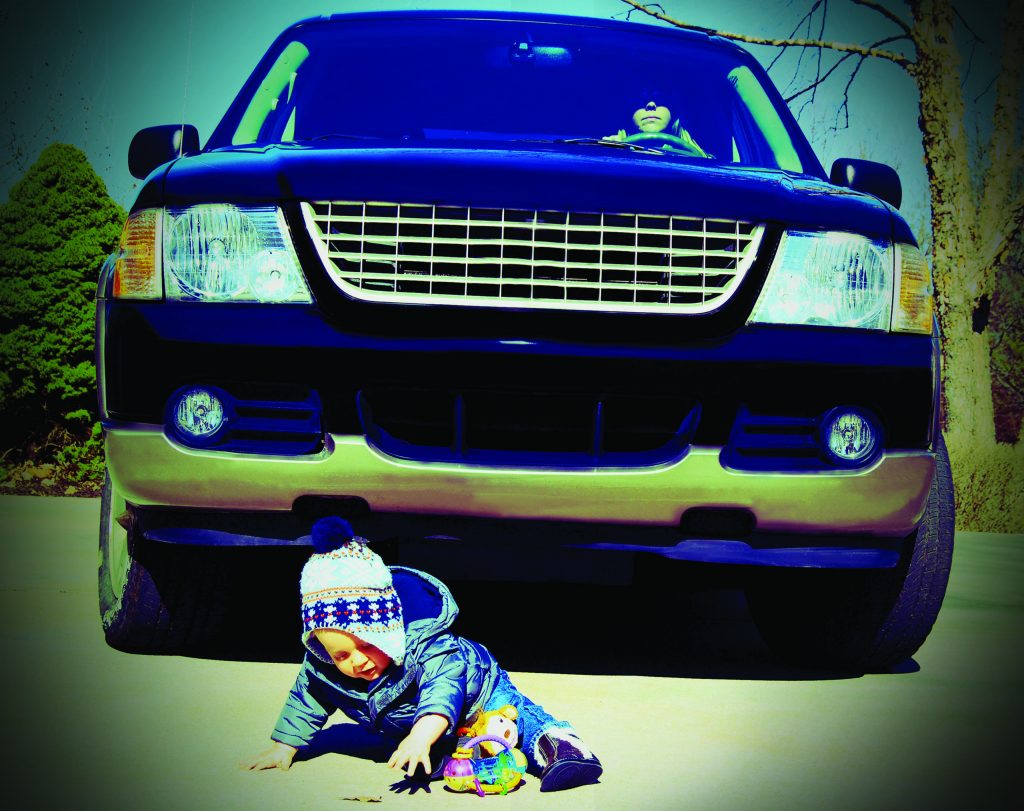
Many newer cars are equipped with safety detection devices such as backup cameras with warning sounds and automatic emergency braking technology. If your car does not have these safety features, you can have them installed. Remember, these devices cannot completely take the place of actively walking around your car to make sure children are safely out of the way. Do not solely rely on these devices to detect what is around your vehicle.
- Vehicle fires are started by children who have discovered matches or a lighter.
- Children have been seriously injured from falling out of a vehicle.
- Abductions and kidnappings are rare, but they DO happen.
- A child can choke on something inside of the vehicle and there would be no adult there to help them. Children are known for putting everything in their mouth.
- Children as young as 3‐4 years old have been known to “take the car for a spin” – even the most well behaved children are curious. They see their parents drive and they want to do it too.

Keeping children safe extends beyond car seats and booster seats. Child Care Aware of Virginia reminds you to never leave a child alone in or around a vehicle, for any amount of time. It takes only a minute for one of these vehicle risks to seriously injure or kills your child. Teach your children the dangers of playing in and around cars. Teaching vehicle safety can help save lives.
Thanks to Kids and Cars for this great information. To learn more about the danger children face when left alone in or around vehicles, visit Kids and Cars website. For more car safety tips, visit the National Highway Transportation Safety Administration Child Safety Website.
